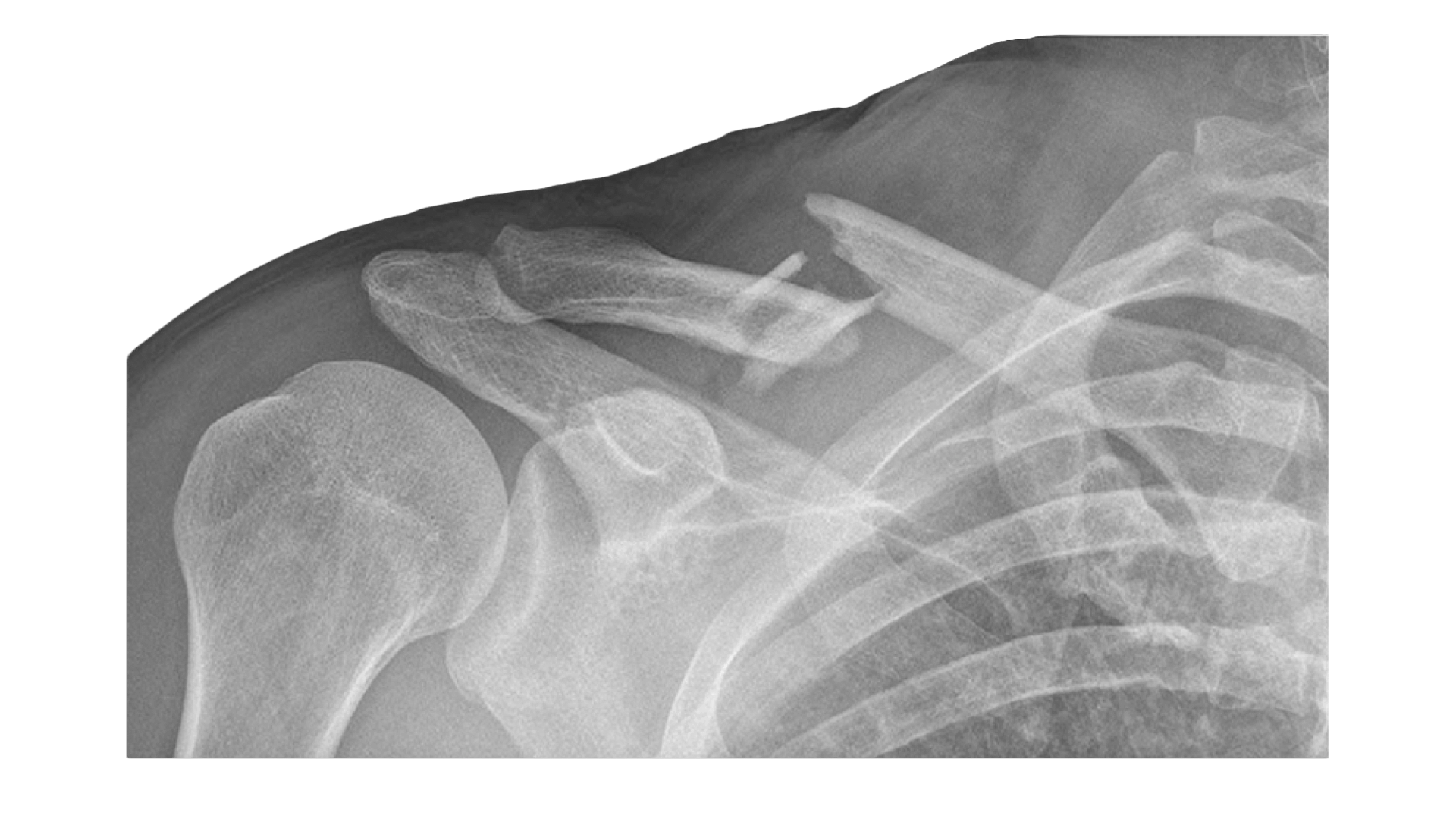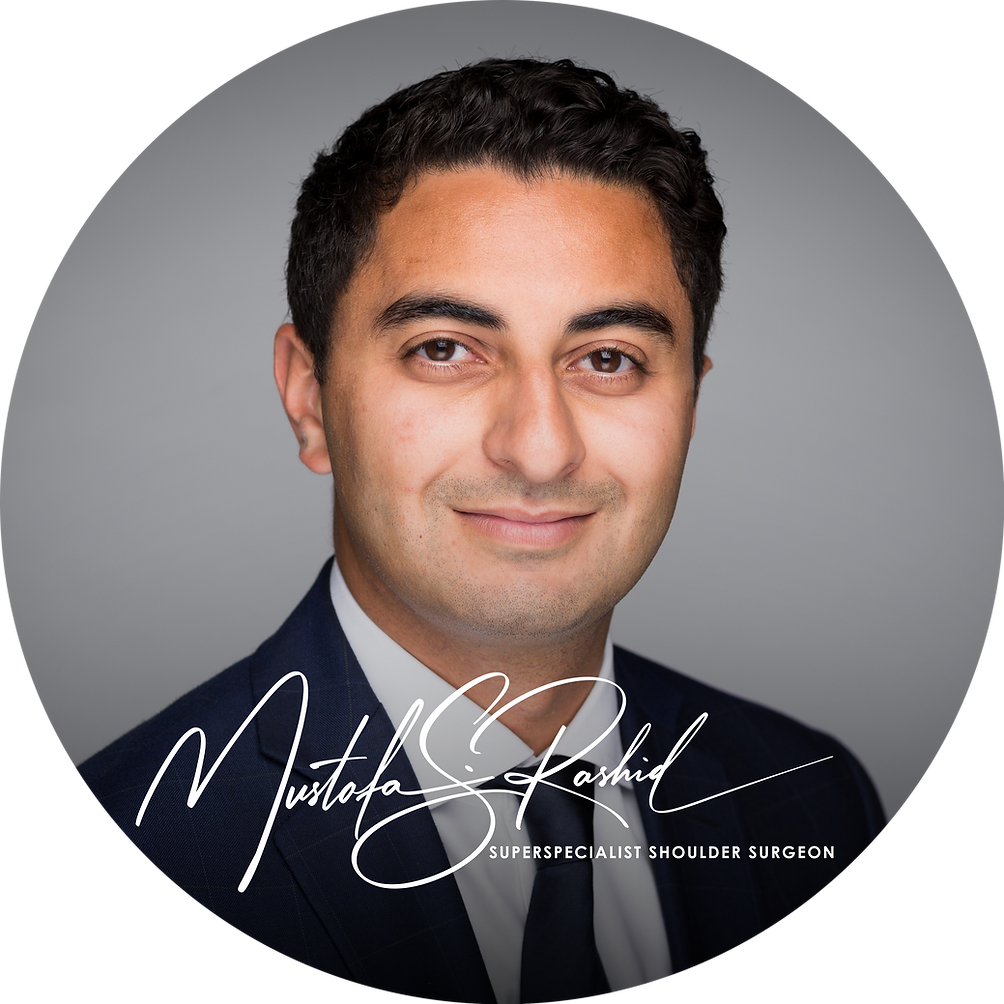Collarbone Fractures

Anatomy and Function
The collarbone forms a connection between the arm and the body. It is important for allowing full and normal movement of the arm as well as providing a stable base for strength. Most people who break their collarbone do so with a traumatic event, such as falling from a height, falling off a bicycle, or whilst playing a sport.
Types of collarbone injuries
Most people will know when they have broken their collarbone. Most collarbone fractures are in the mid portion of the bone. Sometimes the bone breaks with one fracture line, but more commonly, there are more than one fracture line, often creating a middle fragment, called a butterfly fragment. Due to the muscles attaching to the collarbone, they will move the fragments out of position.
Occasionally, the very end of the collarbone breaks, rather than in the middle. In this situation, the ligaments that hold the collarbone to the shoulder blade may also be disrupted, often requiring attention. These injuries are called “lateral collarbone fractures”, with lateral meaning away from the middle.
Symptoms
In the first 4 weeks, pain is the most common feature of collarbone fractures. Most patients will also feel like the bones are moving around when they move their arm, even a small amount. Whilst this may feel uncomfortable, you are not causing any additional damage when this happens. Sometimes the skin overlying the collarbone is damaged and bruised. If the bone is at risk of coming through the skin, this may need urgent surgical attention.
Diagnosis
Collarbone fractures are diagnosed by x-rays. At least two X-rays are taken to assess where the break is, and how far the fragments have moved from their original position.
Early treatment
Supporting the arm with a sling will provide pain relief however, the sling will not help the fracture heal any better or quicker. Pain relief is also often required for most people.
Will my fracture heal?
The majority of collarbone fractures will heal without any surgical treatment. Around 95 out of 100 people with a collarbone fracture will heal naturally. The risk factors for non-healing are: female gender, age over 40 years old, smokers (inc vaping), breaks on the lateral end of the collarbone, and fractures sustained with significant energy causing multiple fragments. Most fractures will feel like they have nearly completely healed by 6 weeks, but physiotherapy is often needed to help regain full motion and strength.
Surgical Treatment Options
Surgery to repair the fracture is possible, using a variety of techniques. Dr. Rashid will counsel you about the risks, benefits, and alternatives in collarbone fracture surgery. He will take into account your wishes, your risk factors for healing, and the likelihood of having a better outcome with surgery. It is important to appreciate that fractures that heal with surgery will often be the same as fractures that heal without surgery. Whilst it may seem intuitive that healing in the original position (with surgery) is better, this has not been proven. Instead, identifying fractures that will likely not heal, and offering surgery to fix those, will likely be advantageous.
Risks of surgery
Like any operation, collarbone fracture surgery has risks. Although these are not common, they are significant. Dr. Rashid will explain these risks to you in detail if you choose to consider surgery. Surgery is performed under general anaesthetic. Risks include scar, infection, non-healing (around 3% of all surgically treated fractures), nerve injury, stiffness, and irritation of the implants as they sit under the skin. Dr. Rashid utilises specific techniques and the most modern implants to reduce these risks, but they are never zero.
Self-Management and Lifestyle Tips
It important to understand that your fracture will most likely heal, even without using the sling. The sling is a useful adjunct to pain relief, but after a few weeks, becomes a device that can increase stiffness. Sleeping with a pillow in the first few weeks, behind your elbow, will help support your arm.
About the Author

Mustafa Rashid
Dr. Mustafa Rashid is an award-winning, well published superspecialised surgeon from the UK, specialising in shoulders
